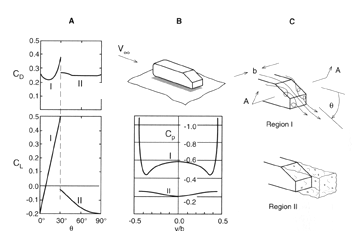Quote:
Originally Posted by Deezler

Ok, well, yeah....
Without the tools that you have here one can only make an educated guess. The Lancer has a very similar body style to a Jetta, so I don't see why this would be too much different. But you are absolutely right, it depends on the car and where the flow begins to separate. So, hopefully we learn it from your simulations! Perhaps you can run a couple trials to see which placement best sends some flow down the rear glass. What do you place in the model shape to simulate this "trip"? Is it just a shape input, or does the software know its meant to trip the flow?
Did you mention that the fusion has a 20 deg. rear glass angle? That is still quite a bit more than the supposed 12 degree maximum thats so often quoted on this site. If the VGs can trip the flow to help minimize wake, they may benefit drag more than their own frontal area and turbulence negate.....?
|
I disagree that the lancer is similar.... The regions we're trying to minimize (turbulent zones) are chaotic (not random, chaotic) - which means small changes in input may result in large changes in output. 20 versus 19 degrees can make a large difference. 20 degrees may be more than optimal - but that doesn't change weather or not it's better than 25 degrees. That said, the lancer appears to have a much steeper angle than the Jetta (without measuring, just looking).
Optimally we want to taper down as fast as possible without separating flow. This results in less surface area (skin friction) with all the benefits of attached flow

Ideally, skin friction should be higher than pressure losses (flow detachment, induced vortecies, etc.). What that angle is somewhat depends on application. As mentioned by aerohead, height off the ground will play a role - in addition to the similar length/height ratio, angle of attack, etc.
For leisure reading
Race Car Aerodynamics - Designing for Speed *-* Bentley Publishers - Automotive Books and Repair Manuals Particularly this tidbit which will turn a lot of what you know on it's head

Quote:
|
As the slant angle is increased from zero, a positive lift will develop, which increases up to ? = 30°. At slant angles larger than 10° the rearward projection of this negative pressure causes quite a large increase in drag, as shown in this Figure. The most interesting feature of this data is that above a critical angle (close to ? = 30°) the vortex structure breaks down and the drag and lift contribution of the slanted surface is much smaller. This fact has an effect on hatchback automobile design, where rear window inclination angle should be more than 35° or less than, say, 25°. Also, note that in this case, the basic body (with ? = 0°) has negative lift due to ground effect, similar to the case with the ellipsoid, shown in Fig. 2.22.
|
Yes, it said the drag for angles greater than 30 degrees actually goes down.... Explanation of this phenomena I will leave for another time (I'm not sure how to explain without introducing a fair bit of jargon). If someone else wants to explain (nudge nudge, aerohead

) - have at it

BUT, I will say that this phenomena explains why "clean" separation for hatchbacks is effective (hence small lip spoilers and protrusions)

Here's the related image

The book (Race Car Aerodynamics by Katz) is a great read - I highly recommend it for aerophiles

Not everything is directly applicable, so keep your scope (car traveling road speeds) in mind.